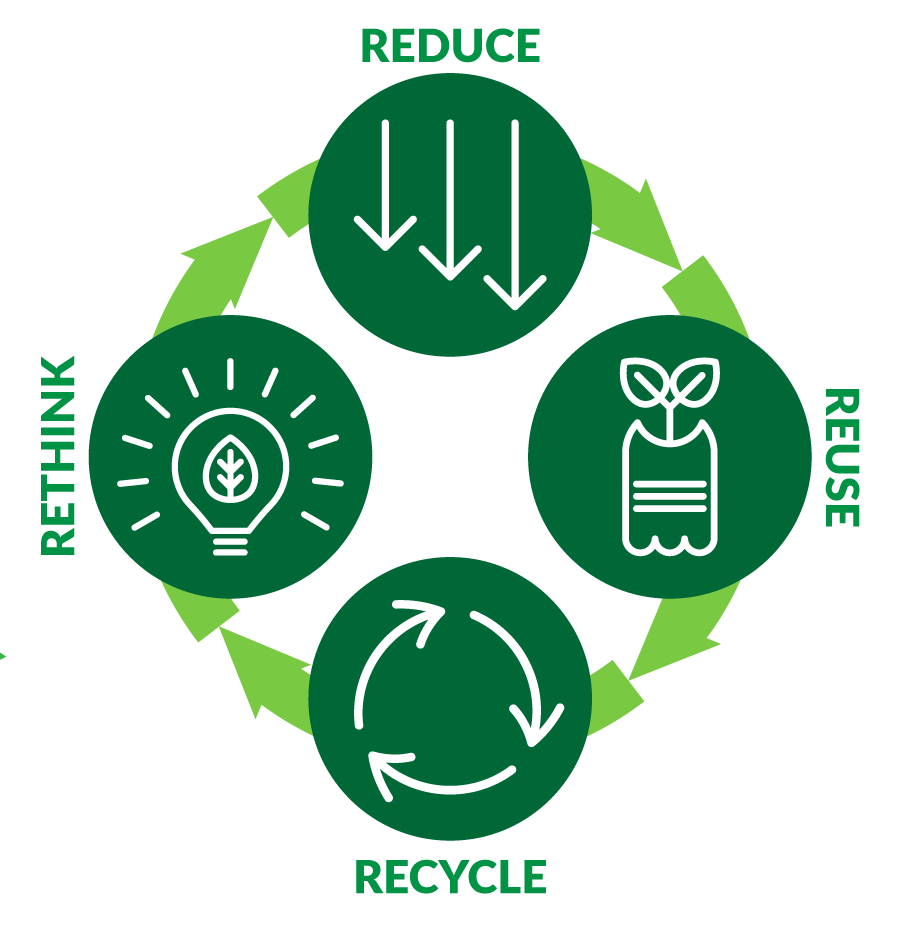Why the Zero Waste Plan?
The Zero Waste Plan started out as the Roadmap to a Sustainable Waste Management Future, the initial waste management planning document adopted by the Board of Supervisors in October of 2014. Since 2014, significant developments impacting waste management such as restrictions on the exporting of recyclables and organic waste diversion mandates, among others, required updating this planning document, which is now referred to as the Zero Waste Plan.
Managing solid waste in a sustainable manner is essential to protect public health, save natural resources and combat climate change. There is limited capacity in landfills for disposal, so it is crucial that we reduce the amount of waste we generate, and reuse and recover materials and products to the maximum extent possible.
The Zero Waste Plan is the Los Angeles County waste management planning document that lays out the general framework for programs and policies the County can implement to reduce reliance on limited landfill space for disposal, maximize the reuse of natural resources, and recover materials to beneficial uses. The Zero Waste Plan promotes a sustainable waste management system focused on a circular economy.
The Zero Waste Plan is also intended to be a resource for residents, businesses, public agencies, the waste industry, environmental organizations, and other interested stakeholders who want to help achieve a more sustainable waste management and community.

The Zero Waste Plan establishes the following long-term targets to divert waste going to landfills:
Waste Diverted by 2025
Equivalent to disposing no more than 3 pounds per person per day.
Waste Diverted by 2035
Equivalent to disposing no more than 1.5 pounds per person per day.
Waste Diverted by 2045
Equivalent to disposing no more than 0.75 pounds per person per day.
Zero Waste Plan Focus Areas
Focus Area 1: Regional/Countywide
Providing regional leadership on sustainability and partnering with cities are important to assist the County in continuing to assure the long-term waste disposal needs of the County. In addition to disposal related activities, the County operates the largest HHW/E-Waste management program in the nation that serves all 88 cities and CUCs. The County also leads a nationally recognized research and development program for state-of-the-art technologies to convert municipal solid waste into electricity, renewable fuels, and other useful products.
Focus Area 2: County Unincorporated Communities
The County Unincorporated Communities (CUC’s) comprise 125 culturally and ethnically diverse communities spread over more than 65 percent of the County’s area – approximately 2,650 square miles. More than one million people call the CUCs home, which represents approximately ten percent of the total population in the County. The Board of Supervisors is the governing body responsible for establishing policies and regulations for the CUCs.
Focus Area 3: County Operations
The County is one of the largest employers in Los Angeles County with more than 100,000 employees working in more than 30 departments/agencies. To facilitate sustainable waste management at County operations, Public Works conducts site visits through the Commercial and Institutional Recycling Program. This program develops Resource Management Plans, which provide facilities with recommendations they can implement to reduce waste and generally enhance the sustainability of their operations.
The Zero Waste Plan includes three strategies with supporting initiatives to reduce waste and divert material from landfills.

